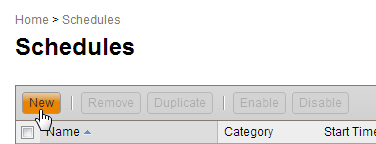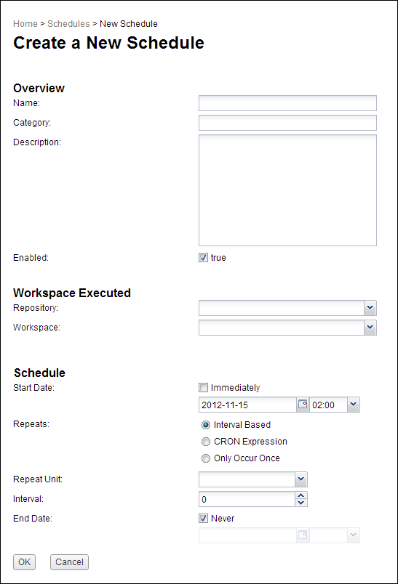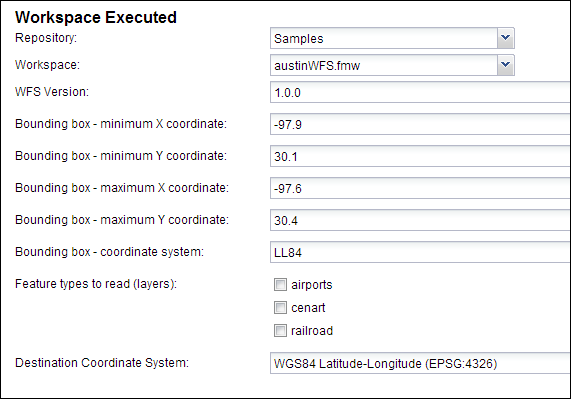
To add a scheduled task, navigate to the Schedules page and do either of the following:

The following dialog is for creating a new task from scratch:

Enter or edit the following information to define the task:
Name - the name of the task
Category - the name of the general category or group to which the task belongs
This name can be used to organize tasks into site-specific types as required.
Task names must be unique within the table.
Description - the description of the task
Enabled- Check to enable the task.
Workspace Executed - the name of the workspace which the task is to run, and the repository in which the workspace resides.
Clicking the Choose Workspace button displays a dialog from which you can select a workspace in the repository. The following screen shot shows a workspace selection:

Once the workspace is specified, any published parameters of the workspace display. You can modify these parameters, if desired. The changes take effect when the task is run.
The server configuration keyword is an advanced feature that tells the FME Engine which FME Server component is generating the transformation request. It has a default value, which you generally do not need to modify.
Start Date - the date and time at which the task is to start
Checking the Immediately box causes the task to start as soon as the task is added to the Schedules table. Unchecking the box allows you to specify a future start date and time.
Repeats- specify how often the task recurs.
End Date: the date and time at which the task no longer runs.
Job Priority – The priority of the job will be set to this value
Job Tag - The job routing tag for the request. For more information about job routing, see Configuring Job Routing in the FME Server Administrator's Guide.
Job TTL - The "time to live" for the job to remain in the queue, in seconds. This directive is useful for jobs that are time-sensitive and may become invalid while waiting in the queue.